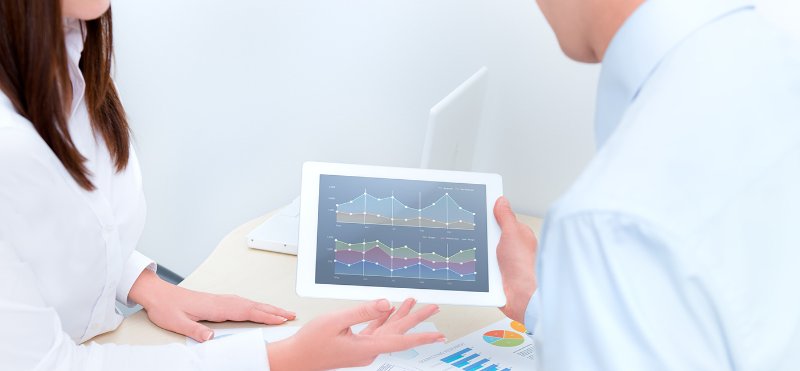Making sense of #mDetailerⓇ pharmaceutical sector
For decades, pharmaceutical companies had a simple business model. They hired thousands of sales reps who would hustle from door-to-door, desperate to win a few minutes time from physicians to attempt to convince them why Product A had superior efficacy and/or fewer side effects than Product B. The practice, which has changed little over the years, is unwieldy and inefficient. Is there a better way?moPharma

The branded pharmaceutical industry is performing at a level of productivity that is lower than what modern technology would allow it. The current, labor intensive approach to selling (and largely qualitative approach to physician segmentation) is not the result of technical limits. Physicians have been quick to use PCs, tablets and the Internet; pharmaceutical companies have plenty of data at their disposal. Instead, the industry is making a conscious choice – based on inertia and fear of ceding some market position and dropping out of the “MR (Medical Representative) arms race.”
Now, however, after much trial and error, the industry might be on the cusp of something much more promising-and is leading the way. The practice is known as “#mDetailerⓇ” or electronic detailing. The term refers to interacting with physicians virtually rather than physically. It often takes place through a company’s own website or through a physical portal coupled with email-driven promotions and attached explanatory videos offering up-to-date pharmaceutical product information.
#mDetailerⓇ has existed in some form for nearly a decade. However, the fact that we have not witnessed a specific winning #mDetailerⓇ model, and that a number of pharmaceutical companies continue to watch from the sidelines, means that the best way to utilize the medium is still the subject of debate.
The case for #mDetailerⓇ
Today, the majority of all physician #mDetailerⓇ taking place globally are happening. The number of smartphones and tablets both owned and used by physicians-and not just the younger ones-has also grown markedly in recent years. Moreover, external pressures such as stricter rules (i.e., a ban on excessive entertainment from sales reps and restrictions on hospital visits) and changing customer dynamics have prompted pharma companies to experiment with new approaches. Specifically, they are using combination of their own Internet websites and emerging physician portals,mobile app development.
We see four benefits of #mDetailerⓇ over traditional sales rep detailing alone.
#mDetailerⓇ is significantly more cost effective and efficient in maintaining interactions with physicians
#mDetailerⓇ significantly improves the accuracy of the product marketing message because it leaves less room for the human error/interpretation and execution risk than an army of sales reps. The details are by definition more carefully scripted (except in peer-to-peer #mDetailerⓇ interactions)
#mDetailerⓇ can provide pharmaceutical companies a much more accurate set of data around physician behavior – in much the same way that e-commerce players sit on a much richer consumer data set than traditional players.
Finally, done right, the ability to provide “double-coverage” (MR detail plus e-detail) can have a multiplier effect towards prescription impact far beyond that of either technique alone.
As pharmaceutical companies have begun to better understand the above, they have gradually increased their attention to #mDetailerⓇ; the number of #mDetailerⓇ efforts almost quadrupled in between 2010 and 2014. At the same time, the amount of time physicians are spending online and the number of these messages being read has also been increasing. For example, one pharmaceutical company told us that the share of time spent on-line by physicians (related to all pharmaceutical touchpoints) has increased from about 5% in 2011, to more than 15% in 2012. The main driver for this has been the increased use of longer P2P (peer-to-peer) contents in #mDetailerⓇ. Interesting to note is that this does not seem to have cannibalized on time spent with MRs, which further supports the arguments and need/value of double-cover for physicians.
While the relative effectiveness of #mDetailerⓇ versus in-person detailing will fluctuate by market and product, our work and background interviews suggest the following: Compared to MR detailings, an #mDetailerⓇ is 60-80% as effective, and the gap narrows along the “adoption curve.” Is #mDetailerⓇ less effective when physicians are in the early stages (awareness, consideration, trial, loyalty) of adoption? The question is tough to answer. Certainly, as physicians become (loyal) users, #mDetailerⓇ works nearly as well as MR visits. But #mDetailerⓇ may also be a good way to “create noise” with non-prescribers – that is, to build awareness and generate early leads. In fact, more than half the physicians is say they learn about the existence of new treatment via the Internet or other e-channels.
The rise of #mDetailerⓇ does not mean the end of human element by any means. Medical professionals value face-to-face interactions; in 2008, the country had 29 sales reps per 100 physicians, twice as many as anywhere else in the world. And a survey Strategic Data in late 2011 found that while only “17 percent of docs say (sales) reps are very useful, perhaps due to #mDetailerⓇ,” three-quarters say that they “are somewhat useful.” The point is to find the optimal mixture of traditional and new channels to build relationships.
These conclusions pose intriguing operational challenges when it comes to deciding how to use the e-channel and sales representatives. They are also an opportunity for the industry and individual companies to create more awareness around the channel and to convert physicians to e-channel and/or MR based upon their channel preferences and a proper behavioral segmentation.
Despite physicians being at the forefront in terms of #mDetailerⓇ reception, there is still a long way to go. “I use (my) smartphone to see websites of societies and check examination steps for differential diagnosis,” said one internist, “but it is not user friendly.” The tablet has the potential to become a useful tool for physicians, but it is early days yet. For example, fewer than a quarter of those surveyed who own tablets use them to check or review medical charts and only 9% used them to communicate with patients or physicians. Most don’t even use it to search for medical information.
Physicians are willing to receive information they are interested in; that does not mean that they want to get tons of mass mails or undifferentiated digital content. The point is that while #mDetailerⓇ may seem like an easy channel to master, this is not the case: The majority of pharmaceutical companies we spoke with admitted that they have not yet been able to master the medium, nor do they fully understand the true ROI of the channel.
Conclusion
Right now, #mDetailerⓇ is more often used at the beginning of a product’s lifecycle (i.e. to win attention during product launches) or at the end (i.e. to sell established products). These are what we call “stay in the race” practices; necessary, but not sufficient. Our view is that the winner will be pharmaceutical companies that look for ways to win the race, not just to stay in it. Down the line, the goal should be to improve brand perceptions; build physician loyalty; and influence the decision-making of both doctors and patients.
Investing in an #mDetailerⓇ platform is not a difficult decision – the advantages are clear. What is more complex is how to do it – specifically, how to fine-tune the mass-marketing #mDetailerⓇ process by monitoring the delicate phasing as a doctor moves from awareness to trial, then from trial to usage, then from usage to loyalty. Here, we observe a great variability – across populations of doctors; profile and personality; and therapeutic area. The best approach is to get as close as possible to the customer and to devise a series of marketing communications that can assist the shift of knowledge or belief in the physician’s mind on which product to prescribe. Therefore, a combination of e-details and MR details is likely to be more effective than either channel alone.
Though the pharma industry has been reluctant to completely change the old MR model or to build more sophisticated segmentation and targeting, it has at least led the way in experimenting with #mDetailerⓇ, most often by relying on the old model to make the new model more effective. As one pharmaceutical executive told us, “What we see today is the birth of cyber-MR-some time in the doctor’s office, some time remotely, always in contact, emailing, video-conferencing, showing animations on the iPad screen, collecting online surveys, and tailoring the digital presentation as time to call gets closer. That is the future of pharmaceutical sales.”





Discuss about post